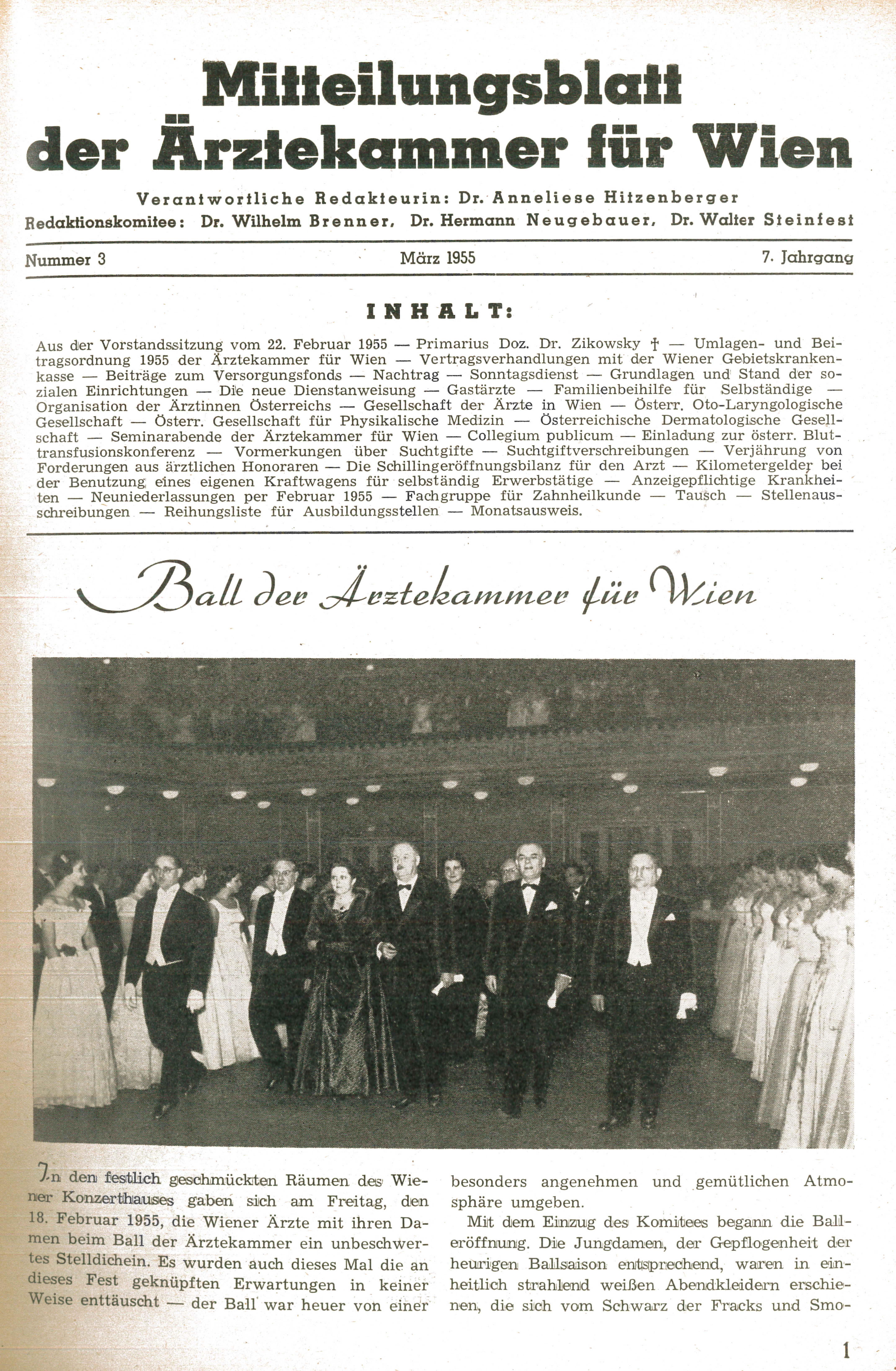This announcement in the 2/19149 edition of the Vienna Medical Chamber information was the beginning of a ball tradition that,
with the exception of two, has continued until today.
A dark suit is sufficient
That the ball was organized not by the Medical Chamber as a whole but only by the section hospital physicians is not the only
thing that seems strange today. The dress code was more informal. At that time "dinner jacket or dark suit" were sufficient.
Today a suit - whether dark or light - is not conisdered acceptable. Dinner jacket is now standard, tails if not specifically
requested are still appreciated by the ball organizers.
The chronicles tell us nothing about the ticket price at the time.
In any case, the location for the first Vienna Medical Doctors' ball was the Vienna Konzerthaus. Even then there was an announcement
for a "midnight performance". This was performed by "Die Kleinen Vier" (the small four). The author (not mentioned) didn't
seem to think that it was worthwhile mentioning this interlude in the report on the first Viennese Doctors' Ball.
That is surprising as, along with Hedy Faßler, Fred Kraus and Willi Hufnagl, a certain Gunther Plachetta - better known under
his stage name as Gunther Philipp - also appeared. He was already popular at the time, as he made his living as an actor.
He had also studied medicine and was even sometimes mentioned in the doctors register.
The times were hard and the decision to organize a doctors' ball was certainly not easy for those responsible. On the other
hand we can read in the official report on the ball „the hospital physicians section of the Vienna Medical Chamber and especially
the ball organizers, Assistant Doctor Mazanek and Doctor Dolinar have to be thanked for their courage in successfully organizing
a doctors' ball in spite of all scepticism and objections. The proof that their idea was correct lies in the fact that due
to the 4,500 visitors the police had to close the Vienna Konzerthaus due to overcrowding.
There must have been a great desire at the time for the Viennese to look towards the future after the horrors of the war.
Cheap tickets for hospital physicians
Success makes courageous. It is therefore no surprise that the organization of the second Vienna Medical Doctors' Ball on
the 16th of February 1950 was removed from the pioneers in the section and incorporated into the general responsibility of the Vienna
Medical Chamber, even though there was still an exceptional position for hospital physicians. For exanple in the programme
for the fourth Vienna Medical Doctors' Ball on the 23rd of February 1953 (there was no ball in 1952 due to "great financial risk") there were reduced ticket prices but not, as
today, for students - but, of course, for hospital physicians. The had to pay 25 Schillings, for everybody else it was 40
Schillings.
Service for members was also a priority at that time : "As the ball management is aware that especially in the first quarter
of the year specialists and general practitioners have a heavy workload colleagues will be contacted telephonically on the
7th of January 1953 to ask if they wish to order tickets. Tickets ordered wil be delivered by messenger.
It can be assumed that the number of guests from the federal states and abroad was limited otherwise a messenger delivery
was hardly possible.
The admission prices remained stable for a long time. Only for the ninth Vienna Medical Doctors' Ball on the 18th of January 1958 was there a moderate price increase to 30 respectively 50 Schillings.
In the course of time the view of the ball organizers in regard to the solemnity of the event seems to have changed, as the
reports (3/1956) on the seventh Medical Doctors’ Ball stated that „the evening dress of the gentlemen tends towards more tails
and dinner jacket.“ Eight years later at the 15th Vienna Medical Doctors’ Ball on the 25th of January 1964 this was required for the first time.


